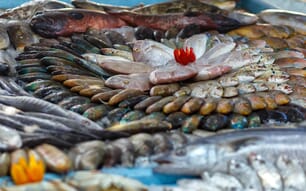TACs are set through an exhaustive process that starts with CSIRO completing stock assessments on each stock. These assessments the pass through the Resource Assessment Group (RAG), the management advisory committee (MAC), the Australian Fisheries Management Authority (AFMA) before finally reaching the Commonwealth Fisheries Commission where this advice is considered and a final decision is made. Total Allowable Catches (TACs) by stock can be found here.
If the fishery's history is divided into five year bocks the trend for the last five years is for an average annual increase of +3 per cent. The average annual trend for the three previous five year blocks is; -7 per cent (2005-2009/10), -2 per cent (2000-2004) and -1 per cent (1995-1999). This makes the most recent five year block the only one during the fishery's 22 years under quotas in which there has been an average annual increase in TAC's.
Six stocks have increased year on year; blue grenadier, flathead, pink ling, ribaldo, royal red prawns and saw shark. Six stocks that have decreased; alfonsino, blue eye trevally, deepwater sharks east, mirror dory, redfish and silver trevally. Most stocks remain unchanged; blue warehou, deepwater sharks west, gemfish east, gemfish west, gummy shark, jackass morwong, john dory, ocean perch all orange roughy stocks, all oreo stocks, school whiting, silver warehou and school shark.
Most stocks targeted by trawlers are now managed under TACs that run for two or three years known as multi-year TACs. This will provide stability without increasing risk to the stocks but will also significantly reduce assessment and management costs enabling industry to afford another year of the costly fishery independent survey (FIS) to be run this winter.



